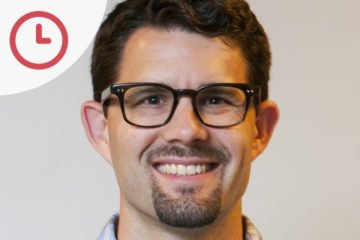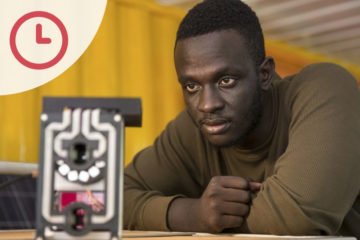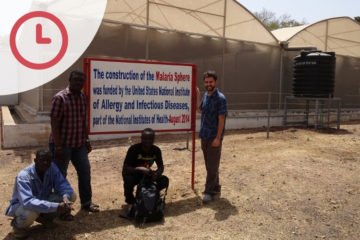Podcast Available on iTunes and Spotify.
Hello, I’m Thomas Locke and this is Five Minutes, the podcast that brings you closer to the people fighting malaria.
The world’s access to mobile phones is increasing. Quartz Africa predicts that one billion people in Sub-Saharan Africa will have one by 2023. Fatou Secka, a student at Dalhousie University in Canada, is using this to revolutionise malaria diagnosis.
Using a 3D-printed lens clip that attaches the back of a smartphone camera, she hopes to detect the presence of malaria parasites in a blood sample – a useful tool in rural communities, where access to specialist equipment is limited.
Fatou, thanks for joining me.
Thank you for having me as well.
When did you first get the idea of using 3D printed smartphone adapters to analyse biological things like blood?
In 2016, I was doing an internship in a water lab. Just the start, these microscopes are open source tools from an American science laboratory called Pacific Northwest, so it is not my intellectual property, it was just a tool that we were working with. I was to use it for water samples, but I have a background in the health industry because I always wanted to do medicine. In 2012 and 2011, I was working in the Medical Research Council in The Gambia so I have a background when it comes to blood-borne diseases. In mid-2016, I brought the idea that I wanted to use these 3D-printed clips to see if they would work for blood diagnosis.
And you went out to test this for blood diagnosis in The Gambia, didn’t you?
Yes, I went in 2017 for a month, but I could only spend two weeks in the lab to test them.
And how do they compare to microscope level of magnification, how accurate are these?
In terms of the magnification power, they are not as strong as compound microscopes that you find in laboratories, Depending on the diameter of the lenses that you insert into the clip, from my experience I have had about a 150x magnification.
Is that enough then to see the malaria parasites in a blood sample?
You can see them but you do not see them clearly. I had experts that are in the lab that confirmed that yes, these are the parasites that we are seeing, but you’d need to do better when it comes to the magnification power of the lenses.
Could this magnification device be used with any smartphone, not just the latest iPhone X or whatever’s popular?
It can be used with any phone. The only thing that needs to be changed would be the clip, but that’s very easy to change, just use an open CAD (Computer Aided Design software) and 3D draw whatever size that you want and that’s about it.
I understand that this isn’t necessarily your end goal, you want to develop your own powerful high-quality microscope, instead of the clips?
I am looking into making my own because I am not very satisfied with the quality of the 3D clips. They have potential in helping people, especially in communities that don’t have well-established hospitals or laboratories. My end goal is to have a microscope that is very powerful, portable and help people that don’t have these privileges.
I don’t know how far you are down the line of R&D, but you know how that would look like? Would it require electricity? Could you use a smartphone with it? What would that look like?
Depending on my target. I would try to avoid it needing electricity so it could probably work with a battery or recharged with a solar system. But, the more the more we can avoid it needing a power source, the better I think it would be for rural areas.
Graham Gagnon says that you break all the stereotypes about women in engineering. How do you feel, being a woman from The Gambia, being able to innovate such a great product in this space?
To be honest, it does get scary because now that I’m out there I personally feel there are a lot of expectations but it is inspiring for me that I am inspiring the younger generation.
Fatty Secka, thanks very much.
Thank you very much.
That was Fatou Secka on Five Minutes. Remember that you can subscribe to this podcast on iTunes and Spotify.
Thanks to Yvette D’Entremont from The Star for connecting me with Fatou. She wrote the original article that inspired this podcast.


